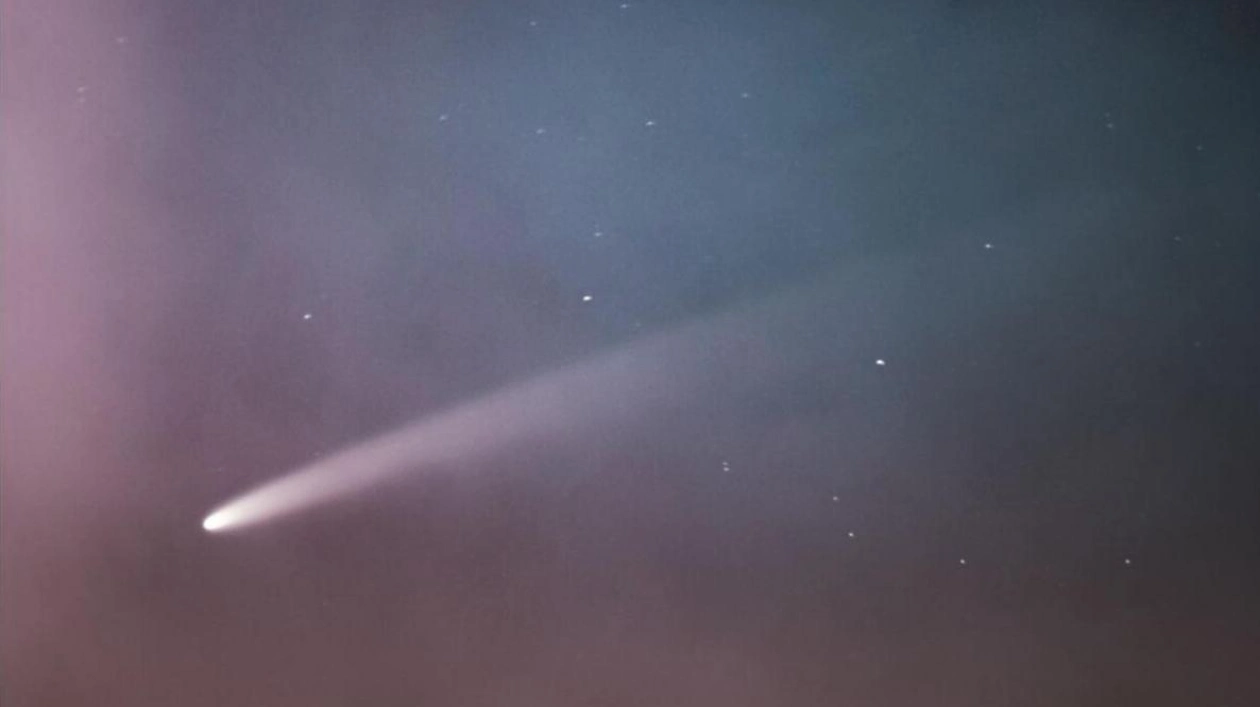Stargazers in the UAE are in for a celestial treat this October, as they have the chance to observe a comet that appears only once every several thousand years. Named C/2023 A3, this long-period comet was discovered by the same astronomical survey system that identified Earth's new 'mini moon.' According to Khadijah Ahmad, operations manager at Dubai Astronomy Group, the comet could potentially be the 'brightest of the century' if it reaches a magnitude of more than 0.5. However, she cautioned that predicting its exact brightness is currently uncertain, as comets can exhibit unpredictable behavior as they approach the Sun.
The comet made its first appearance in UAE skies just before sunrise on September 27 in the eastern horizon, and it remained visible until October 2. Unfortunately, it was not visible to the naked eye during this period. A photograph captured by the Dubai Astronomy Group on September 28 at 5am in Wadi Shawka, Ras Al Khaimah, shows the comet in a single shot with a 15-second exposure.
Khadijah informed Khaleej Times that the comet will reappear from October 12 to October 30 in the evening sky, after its perihelion (closest approach to the Sun). During this period, it is expected to be visible to the naked eye, although a telescope will provide the clearest view. Several factors, including the comet's reaction to the Sun, weather conditions, and its distance from the horizon, will influence its visibility. Since C/2023 A3 is low on the horizon, light scattering by the Earth's atmosphere may pose a challenge for observers.
To enhance the chances of spotting the comet, observers should look towards the horizon (either eastern or western, depending on the dates) in areas with minimal light pollution. Deserts, away from city lights, are ideal locations for such observations, according to Khadijah.
Long-period comets like C/2023 A3 typically originate from the Oort cloud, a vast, spherical shell of icy bodies surrounding the solar system. Proposed by astronomer Jan Oort in the 1950s, the Oort cloud is the most distant region of our solar system. While sunlight reaches Earth in about 8 minutes, it would take between 10 to 29 days to reach the inner edge of the Oort cloud and nearly a year and a half to pass through its outer edge. Most long-period comets have been observed only once in recorded history due to their long orbital periods, with some never venturing close to the Sun since their formation.






